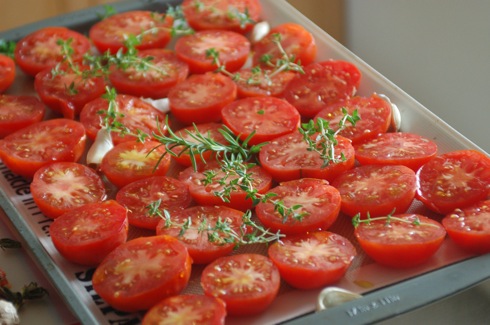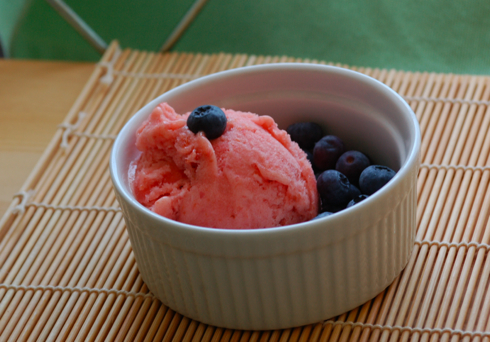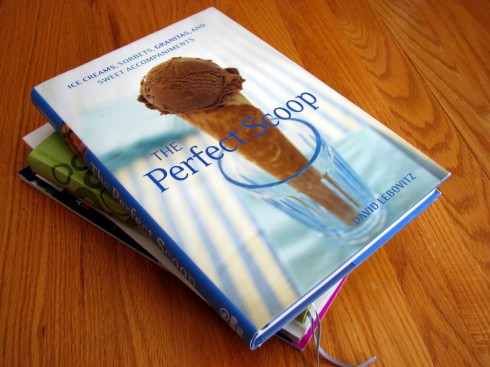by Sam Tackeff | Oct 1, 2009 | Farmers Market, Gardening, Vegetables

While we were growing up, my dear friend Julia hated tomatoes. This was always completely perplexing to me, as there is nothing in my mind as perfect or as wonderful as a tomato. Who could possibly hate such a thing? Sweet, just slightly tangy, with multiple textures as you bite through a fresh one. And don’t get me started about sun warmed tomatoes fresh off the vine. My mother always kept them in her garden, and I remember fondly summer afternoons at my CSA picking them off the vine and eating them almost as fast as I picked them.
It’s with great sadness that I can’t grow my own tomatoes here on the third floor. Julia, at least, has since found pleasure in tomatoes, so at least I don’t have to worry about that.
Over the past few months I’ve been eating tomatoes almost every day, taking full advantage of these summer beauties before the season is completely over, and we are forced once again to give them up for the winter. Before the summer ends, I implore you to head out and try my newest tomato obsession – Dry Farmed Early Girl tomatoes.
Now, the Early Girl tomato is… gasp! a hybrid tomato!
While I do believe that choosing an heirloom vegetable over hybridized versions is important for continuing on longlasting varietals, I don’t exclude choosing hybrid tomatoes that are sustainably farmed. Early girl tomatoes are just too good to pass up, and are perfectly suited for dry farming – a technique that requires less water for farming. After transplanting, the tomato is no longer watered, which causes the roots to grow larger to attract more moisture, and in consequence, the tomato ends up with a more concentrated tomato-ey flavor. In this neck of the woods, Dirty Girl Produce happens to be championing the dry farming of early girls, and I’m so happy to support them.
After reading about these for weeks – and finally picked up some of my own at farmers market. Oh my goodness. How have I lived without them? These beauties I picked up from Dirty Girl Produce – I’ve been getting them at the farmers market, and when I needed a midweek fix I was so excited to see them at the new Whole Foods in my neighborhood.
I think I’m also smitten because Joe Schirmer, who owns Dirty Girl, is on this years reader’s choice “Farmers Under 40”, alongside Novella Carpenter, author of Farm City: The Education of an Urban Farmer. Novella made us all giggle incessantly when she came to visit Omnivore Books for a signing last month. I’m a big fan!

Just a few things I’ve been doing with these tasty tomatoes:
:: Sliced up for breakfast with a cube of cheddar, some turkey bacon and Turkish tea.
:: Oven- Roasted – with some olive oil and rosemary and thyme (see above). I don’t have an after photo, because, ahem, I forgot and then ate them all. I’m going to do another few batches soon and preserve some in olive oil, and puree some for the freezer.
:: “Just tomato” soup: Blended raw with basil and a little bit of chicken broth, and heated up over the stove, seasoned with salt and pepper and a swirl of peppery olive oil.
:: The Lazy Salad – Sliced up tomatoes, tossed with frisee and Whole Foods marinated gigante beans from the antipasto section.
by Sam Tackeff | Aug 24, 2009 | Books, Ice Cream

I have the most marvelous news to share:
David Lebovitz is coming to visit us at Omnivore Books in San Francisco from 6-7 pm on September 28th. This is possibly the greatest thing that could ever happen, because, well, it’s David Lebovitz! DAVID LEBOVITZ!!!!!
I’ve been gushing about it since Celia found out! And I nearly died when he became friends with the bookstore on Twitter.
If you don’t know who he is well, in quick summation – he’s a most amazing man who used to live in San Francisco and do pastry at Chez Panisse under Lindsey Shere, until he decided to take his chances on living a fabulous life in one of the most beautiful and dare I say delicious cities in the world – Paris.
And he blogs about it, and he tweets about it, and he captures the idiosyncrasies of the French quite perfectly in his new book: The Sweet Life in Paris: Delicious Adventures in the World’s Most Glorious – and Perplexing – City. It made me giggle the entire way through. And then I went to the store tout de suite to recreate the well chosen recipes in each chapter.
Ever since I got my new Kitchenaid Icecream Maker attachment last month (THANK YOU MOM!), I’ve been working through David’s recipes from his book “The Perfect Scoop”.

His recipe for nectarine sorbet has been a favorite, because we have been blessed with delicious crops of nectarines and peaches here in California – so I’ve made this twice now. I used really, really ripe fruit – almost on the verge of turning, and the final products were so painfully delicious.
I’m posting the recipe verbatim (something I never do), only because it’s really quite perfect, and I think it captures his personality quite well. (My only notes are – that I skipped the skinning step when making peach sorbet, and it still worked out just fine – also, do make sure to put the kirsch or lemon juice, because it helps to form a smoother sorbet and avoid ice crystallization).
Nectarine Sorbet
makes about 1 quart (1 liter)
There’s a curious custom in Gascony, a region in the southwest of France known for its full-bodied red wines (it’s famous neighbor is Bordeaux). When they’ve just about finished their soup, the locals tip a little bit of the red wine from their glass into their soup bowl, mingling the wine with the last few spoonfuls of the broth.
I later discovered that this custom is equally good with a goblet of sorbet when I was scrambling to figure out a way to make this rosy nectarine sorbet a bit more special for an impromptu dinner party. I simply scooped sorbet into my guests’ wine glasses at the table and let them pour in as little (or as much) red wine as they wished. It was a big success. If you have time to think ahead, prepare a big bowl of sweet, juicy berries and sliced nectarines, and let your guests add some fruit to their sorbet too.
6 ripe nectarines (about 2 pounds, 1kg)
2/3 cup (160 ml) water
1/4 cup (150 g) sugar
1 teaspoon kirsch, or 1/4 teaspoon freshly squeezed lemon juice
Slice the nectarines in half and remove the pits. Cut the unpeeled nectarines into small chunks and cook them with the water in a medium, nonreactive saucepan, covered, over medium heat, stirring occasionally, until they’re soft and cooked through, about 10 minutes. Add a bit more water if necessary during cooking.
Remove from the heat and stir in the sugar. Let cool to room temperature. When cool, puree the mixture in a blender or food processor, until smooth. Stir in the kirsch or lemon juice.
Chill thoroughly, then freeze it in your ice cream maker according to the manufacturer’s instructions.
Variation: For Peach Sorbet, substitute 7 large, ripe peaches for the nectarines. Remove the skins prior to cutting them into chunks.
Perfect Pairings: If you like the idea of red wine with Nectarine Sorbet, pair it with the Raspberry-Rose Sorbet (page 130), or simply serve it in goblets and pass a bottle of fruity red wine, such as Beaujolais, Brouilly, or Merlot.
by Sam Tackeff | Aug 9, 2009 | Farmers Market, Local stores, Shopping, Vegetables

It’s something terrible we have all experienced. Accidentally eating a light pink, mealy, and flavorless tomato. Or perhaps eating a bland, completely tasteless melon. Or worse eating slices from an unripe slightly green banana. How do you ensure that you are eating the tastiest and most nutrient rich fruits and vegetables? Start eating seasonally and locally!
Eating seasonally means eating whats ripe when it reaches its natural point of the seasonal growing cycle. Heading to your local farmer’s market or green market is a good way to start, a level up would be joining a local farm’s CSA to get yourself fresh fruits and vegetables ever week or two through the summer, and even in winter. Here are my favorite go to resources:
For the Fridge: Because I live in San Francisco, I’m blessed to be able to use the Local Foods Wheel which shows both foods that are in season all year round on the inner circle, and foods coming into season on the outer circle. So far there is a New York version and a San Francisco version – let’s hope they expand soon! (If you are in SF – you can pick up your own copy at Omnivore Books! We have ’em in stock)
Portable for the tech crowd: the Seasons iPhone application will give you seasons information for “fruits, vegetables, lettuces, herbs, fungi and nuts,” for wherever you happen to be. You can view local seasons versus import seasons and see a graph that shows how “in season” a given food is. It’s $1.99, but you can take it everywhere!
There are also a few websites that are great resources: the Northeast Regional Food Guide for the New England area, and in Europe, BBC Food runs the What’s In Season page . A little more obscurely, a Swiss couple runs a site called Laughing Lemon, that also shows what is in season each month, and points out some rarer vegetables and fruits. Because the northern hemisphere has similar growing zones, these sites can be helpful for anyone in that general region. (via Maki)
For further reading, there are several cookbooks that discuss eating seasonally that I love:
– Jamie Oliver’s Jamie at Home (discusses growing and cooking methods for seasonal veg)
– Nigel Slater’s Kitchen Diaries (his eating journal for a year of dinners)
– River Cottage Vegetable Handbook – the River Cottage makes the best little handbooks on the planet. They have ones for mushrooms, preserving, bread making, and seafood as well.
Do you go to your local farmers market? Are you a member of a CSA? (Actually, if you are a member of a CSA that you love in San Francisco, gush about it here in the comments. I need suggestions! )




